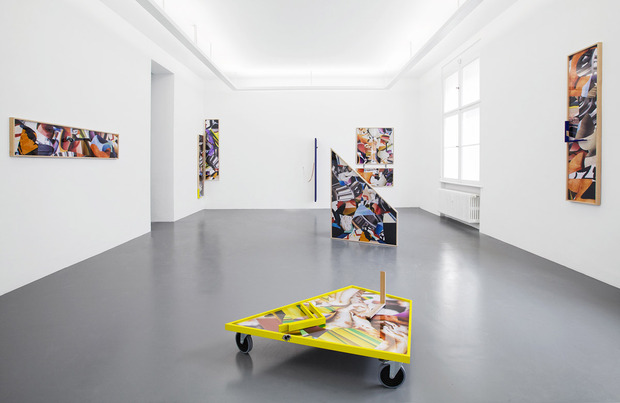Kate Steciw’s Manipulated Stock Images
The artist turns 5 images intended for much more mundane use into hypnotic pieces that transcend the rectangular photograph

In her first solo exhibition in Germany, artist Kate Steciw manipulates a very limited number of stock images into unique layered compositions, blurring the line between representation and abstraction. Bethlehem, Pennsylvania-born and now Brooklyn-based Steciw adorns each piece (framed in unique shapes that often come out of the wall or sit on the floor) with decals, wheels, hooks and chains to further challenge our traditional concepts of how photographs should be presented. We spoke with the artist about her show “ACTIFE PLASSITY” (now on view at Berlin’s Neumeister Bar-Am gallery) and asked her how she both loses and finds new meaning in photographs originally intended for a much more mundane purpose.
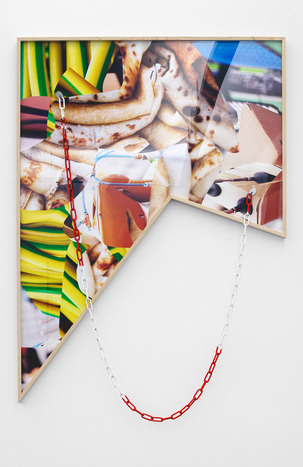
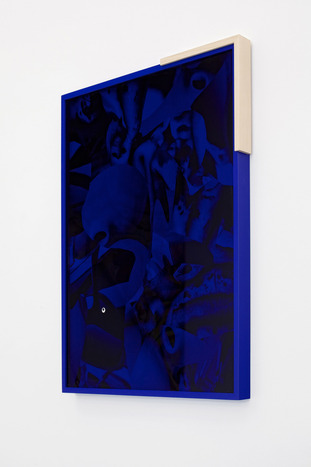
All of the works in this show were produced using just five different stock photos. What was so enticing about those five images?
At this point in my practice, the process of choosing images is really instinctual (though, I imagine, somewhat influenced by the viewing software). I see images, patterns and color combinations that have potential. Once I’ve settled on the five images, they were all layered into one file and manipulated and reconfigured from there. There are really infinite potential outcomes of this way of working. The 12 resultant works in the show represent a fraction of the possible pieces that could be derived from this single file.
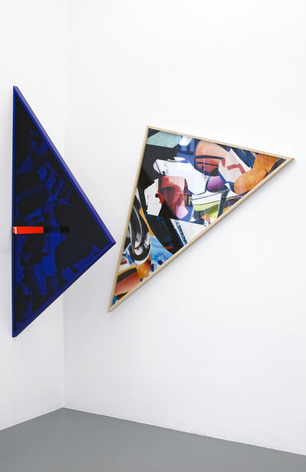
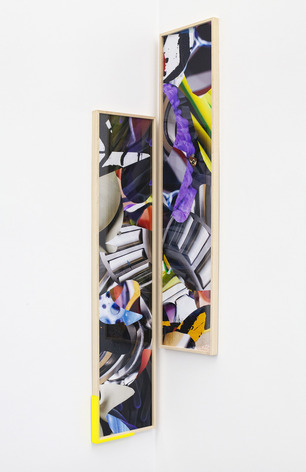
Occasionally there is something clearly identifiable within the construction of the image. How considered is the balance between representation and abstraction in each picture?
The balance between representation and abstraction is somewhat arbitrary. I see all of the images I use (even in an unaltered state) as abstract and am attracted to images that exhibit this kind of inherent abstraction. The most successful compositions, to me, are the ones that include some recognizable aspects, but somehow allow them to exist in a state of representational flux. (For example, a ball bearing is visible, but could also be the rings of Saturn.)
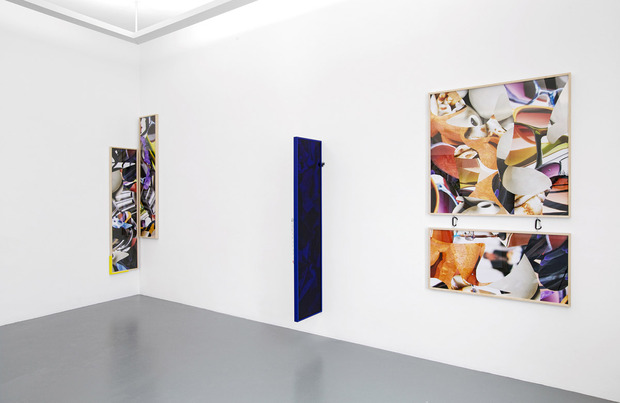
Your work avoids the tradition of the rectangular photograph, and the pieces don’t end once they are framed. What determines the final shape of each piece, and why do you further alter your images with stickers and chains?
I am interested in fragmentation as a gesture
As a continuation of the digital work performed on each piece, further work with or on each piece via framing, installation and subsequent sculptural intervention seemed logical after a certain point. Shapes are determined by slicing the image either in Photoshop or physically. This is somewhat at random, although a lot of the triangular pieces I produce are two halves of the same 40″ X 50″ print file. I am interested in fragmentation as a gesture. To purposefully truncate what was originally a complete or “finished” image is another way of intervening in the picture plane. Furthermore adhering something—anything, really—to the surface of the frames is a simple way of introducing another dimension and, in the case of the wheeled floor pieces, another potential action (movement) or attribute (speed).
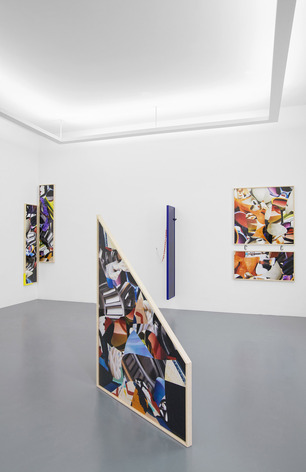

Your work was recently included in the well-received group show at the International Center for Photography in New York called “What is a Photograph?” Do you see your work as pushing the boundaries of contemporary photography, or would you prefer to have it considered outside that particular medium?
I am thrilled to have my work considered at all.
“ACTIFE PLASSITY” is now on view at Berlin’s Neumeister Bar-Am gallery (Goethestraße 2, 10623 Berlin) until 19 July.
Images courtesy of Kate Steciw and Neumeister Bar-Am Gallery
